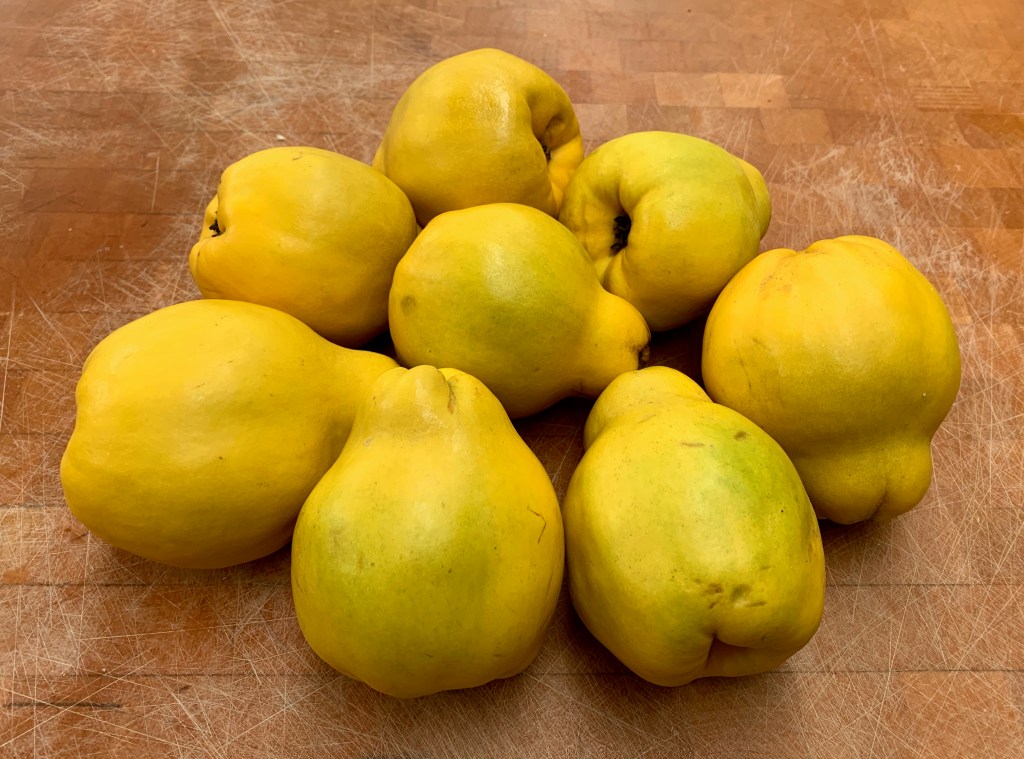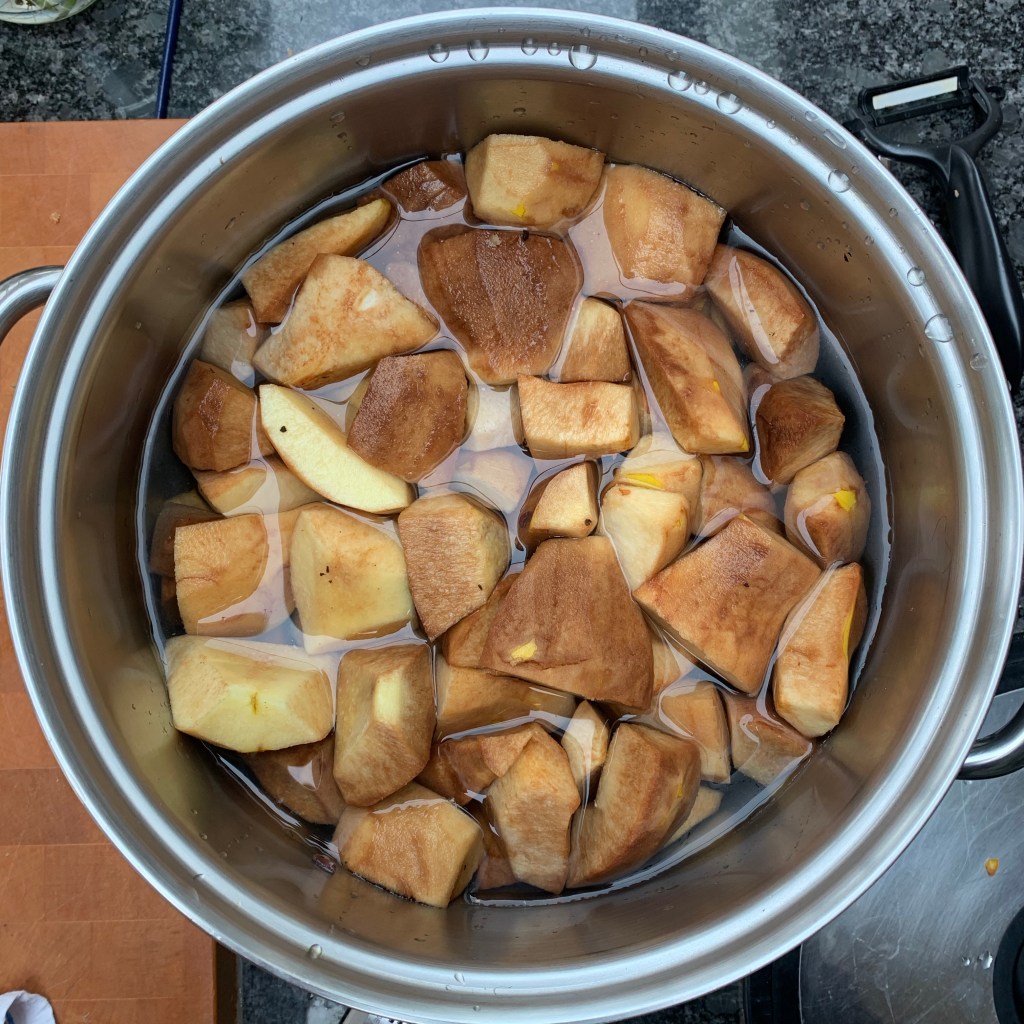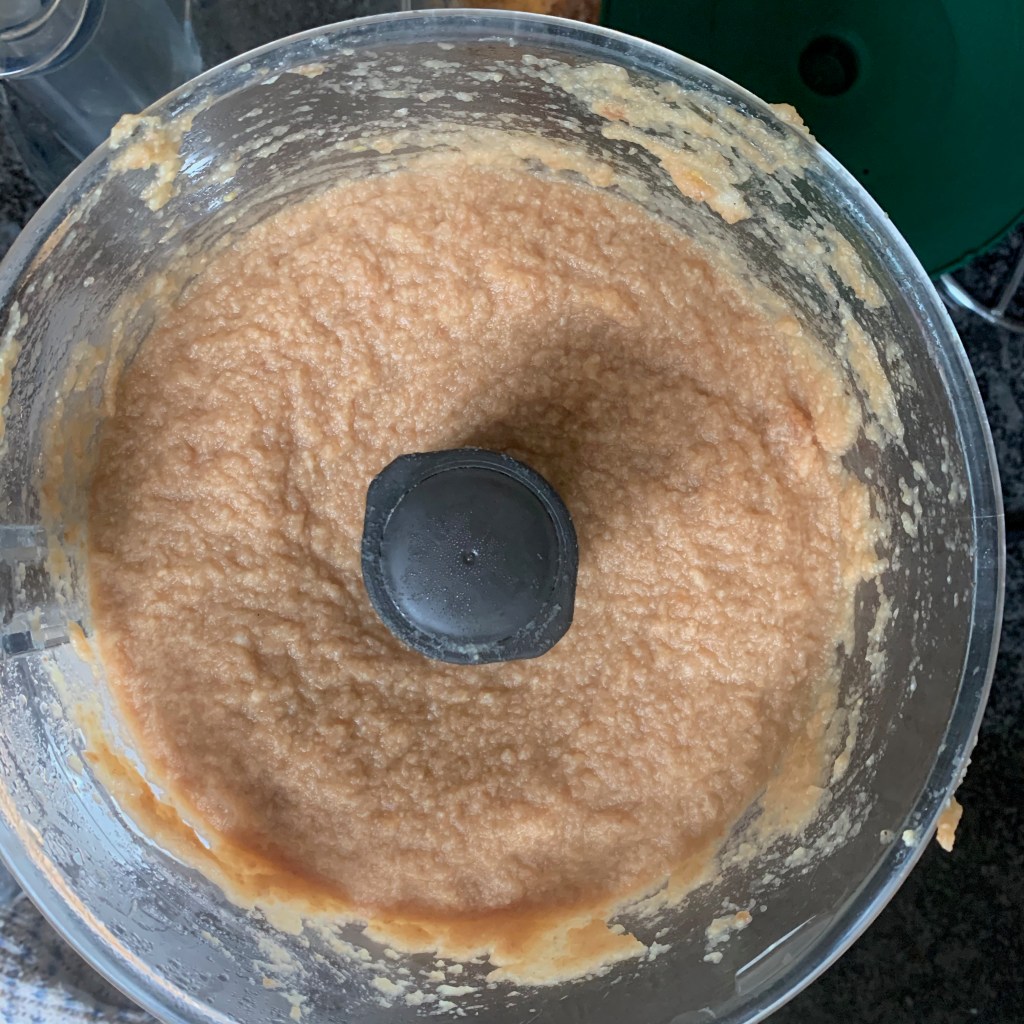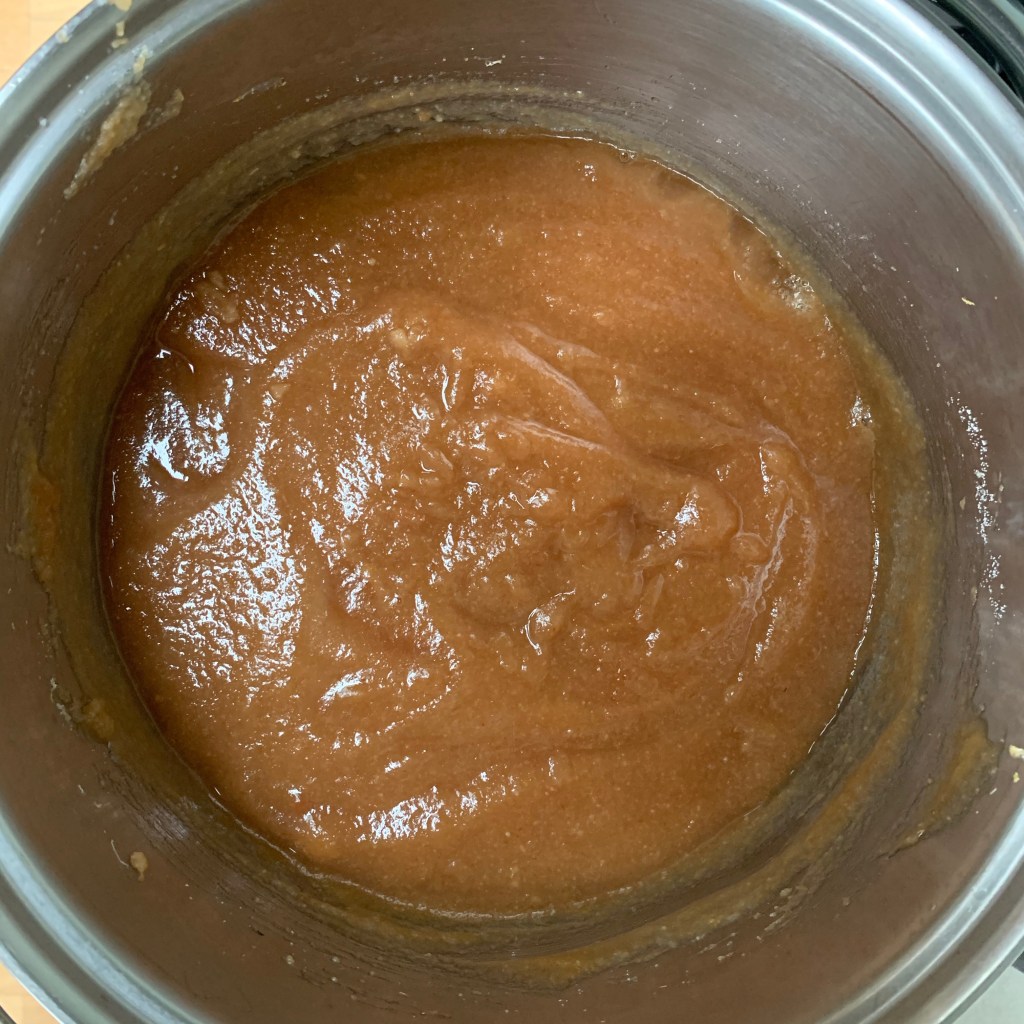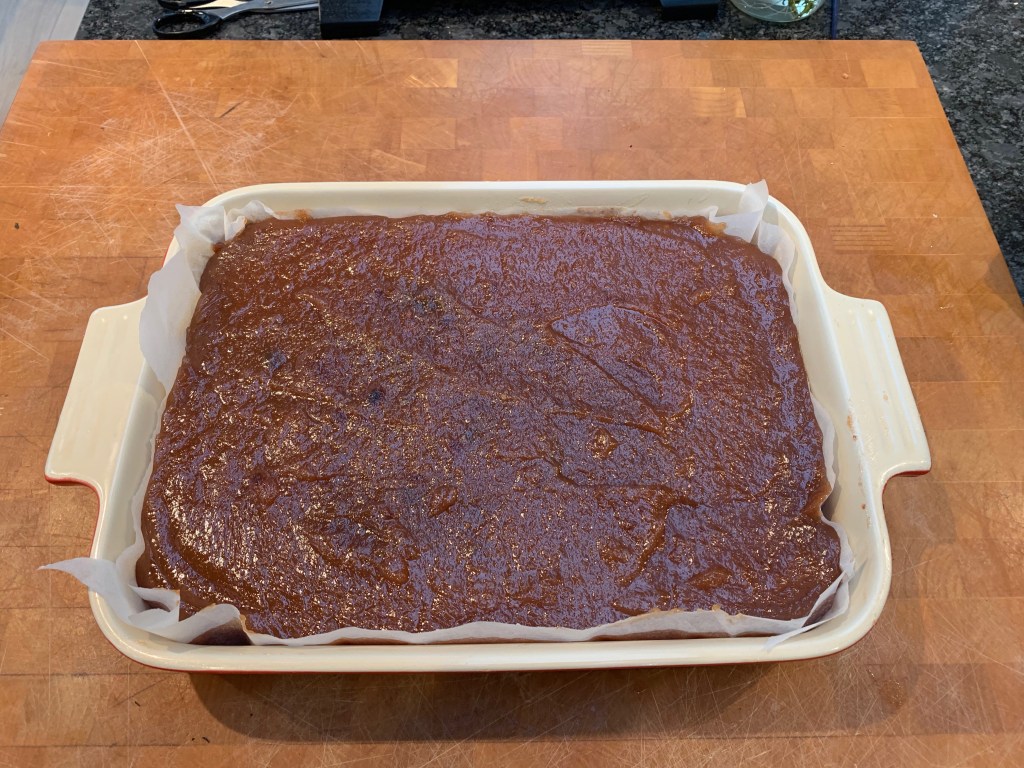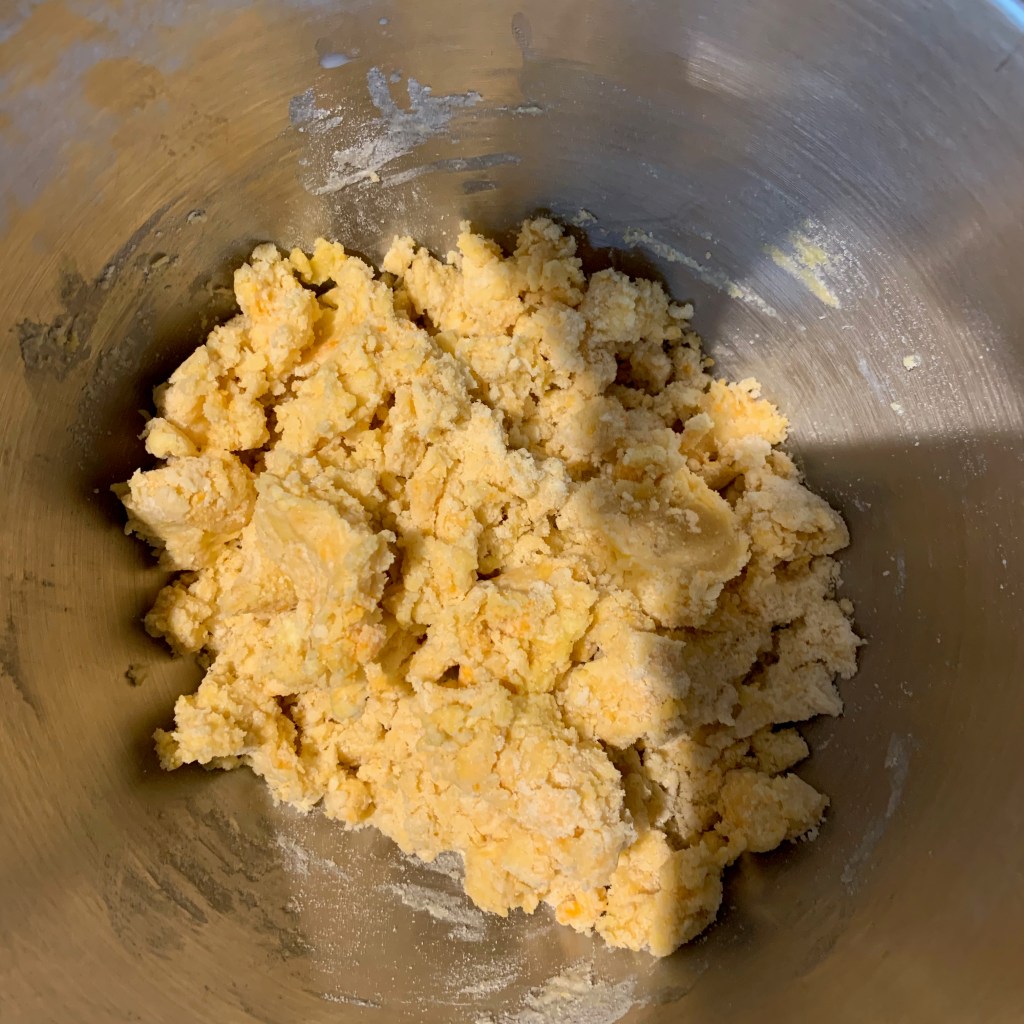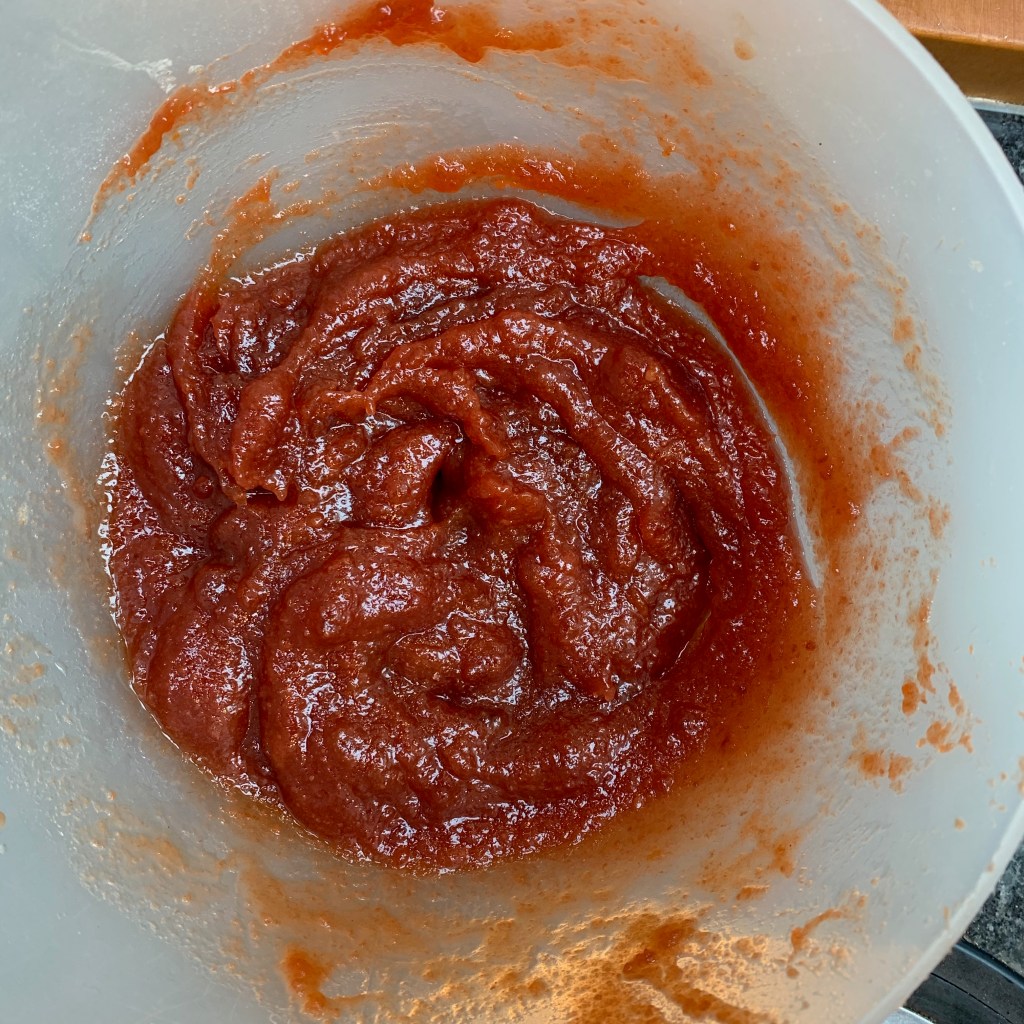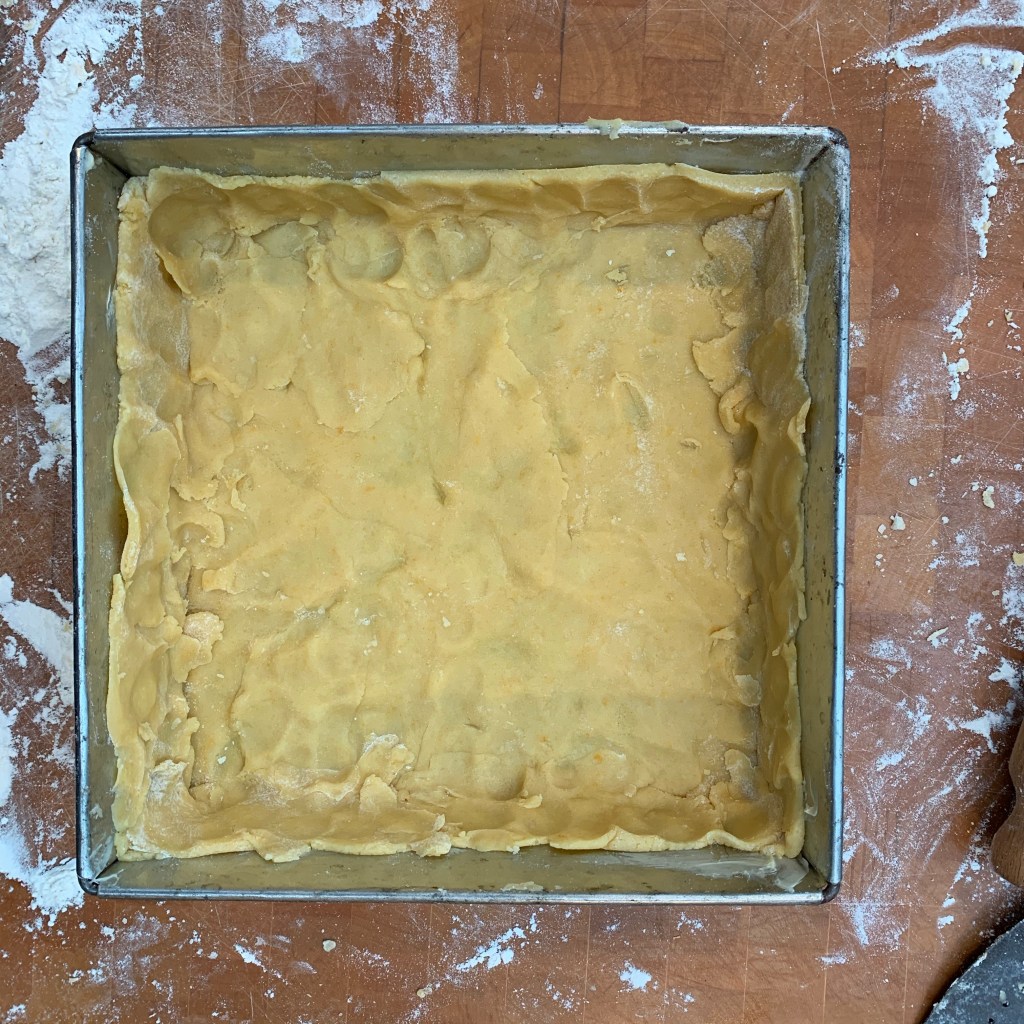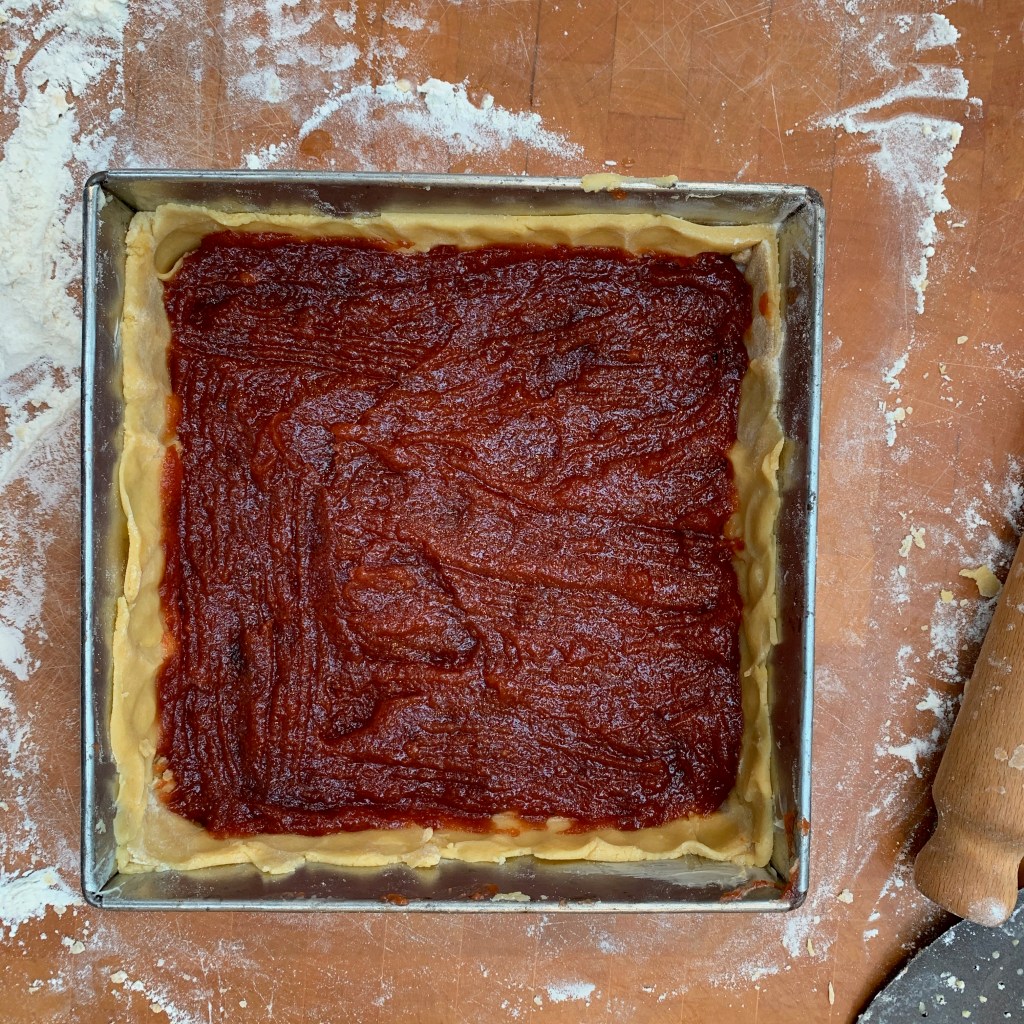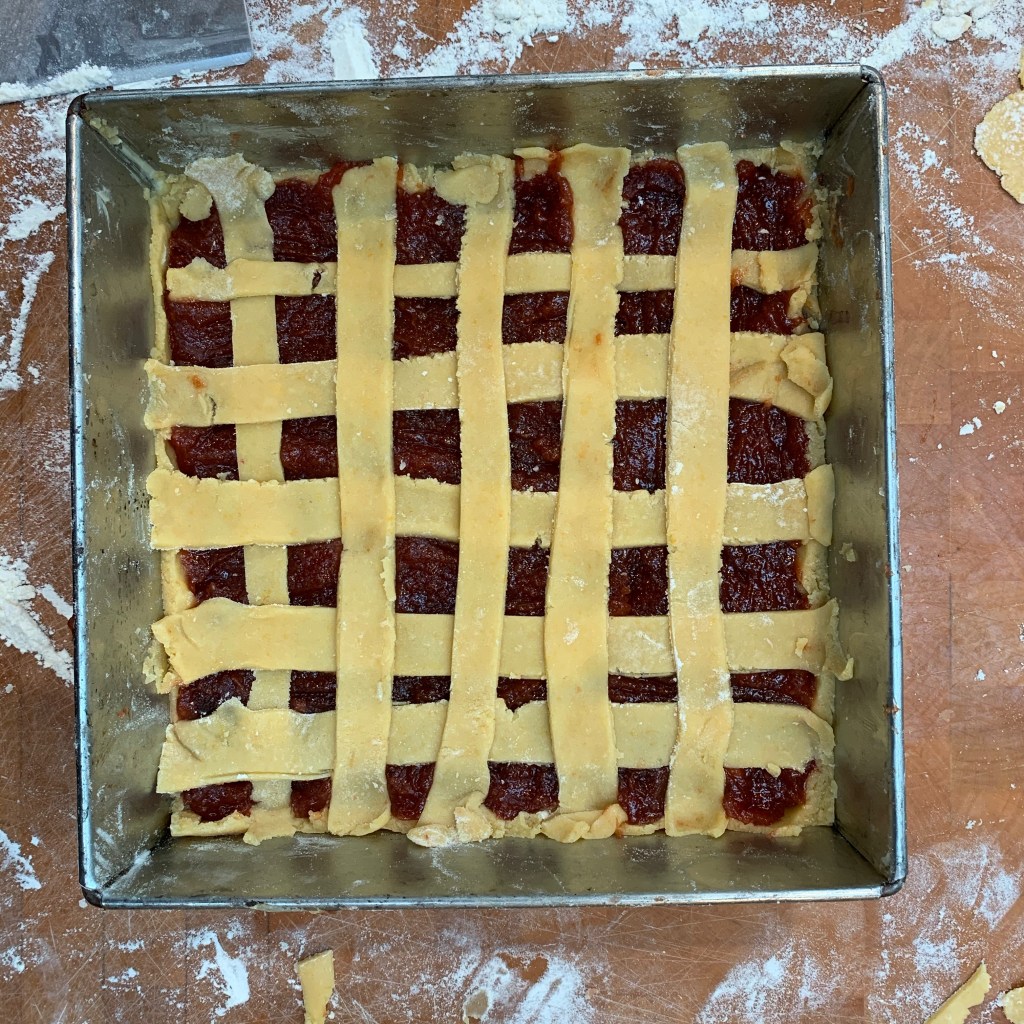Where home-coming Argentinians make a beeline for Alfajores, Paraguayans head for Pasta Frola: a lattice-topped jam tart filled with either guava or quince paste. Childhood summers in Portugal have made me particularly partial to quince paste, and in any case, guavas are hard to get hold of here in England, so the quince version was the obvious choice.
Time for a couple of short linguistic digressions. The Spanish for quince is “membrillo”, and quince paste (sometimes called “quince cheese” for reasons I can’t fathom) is “dulce de membrillo”. In Portuguese, however, a quince is a “marmelo” and the paste is called “marmelada”. The English word “marmalade” confuses both Portuguese (where orange jam is just called “doce de laranja”) and Italians, for whom the word “marmellata” means jam of any sort, and “marmellare” means “to make jam”. In Italian, “pasta frolla” simply means shortcrust pastry, and this dessert would be called a “crostata”.
You can buy dulce de membrillo ready made in the UK, but it tends to be fairly expensive at around £25 or £30 for a kilo. Anyway, our local shops don’t stock it and our local fruit shop had quinces, so I had a go at making my own. Peeling quinces is a bit of faff – the skin is very tough – but other than that, the process isn’t too difficult.
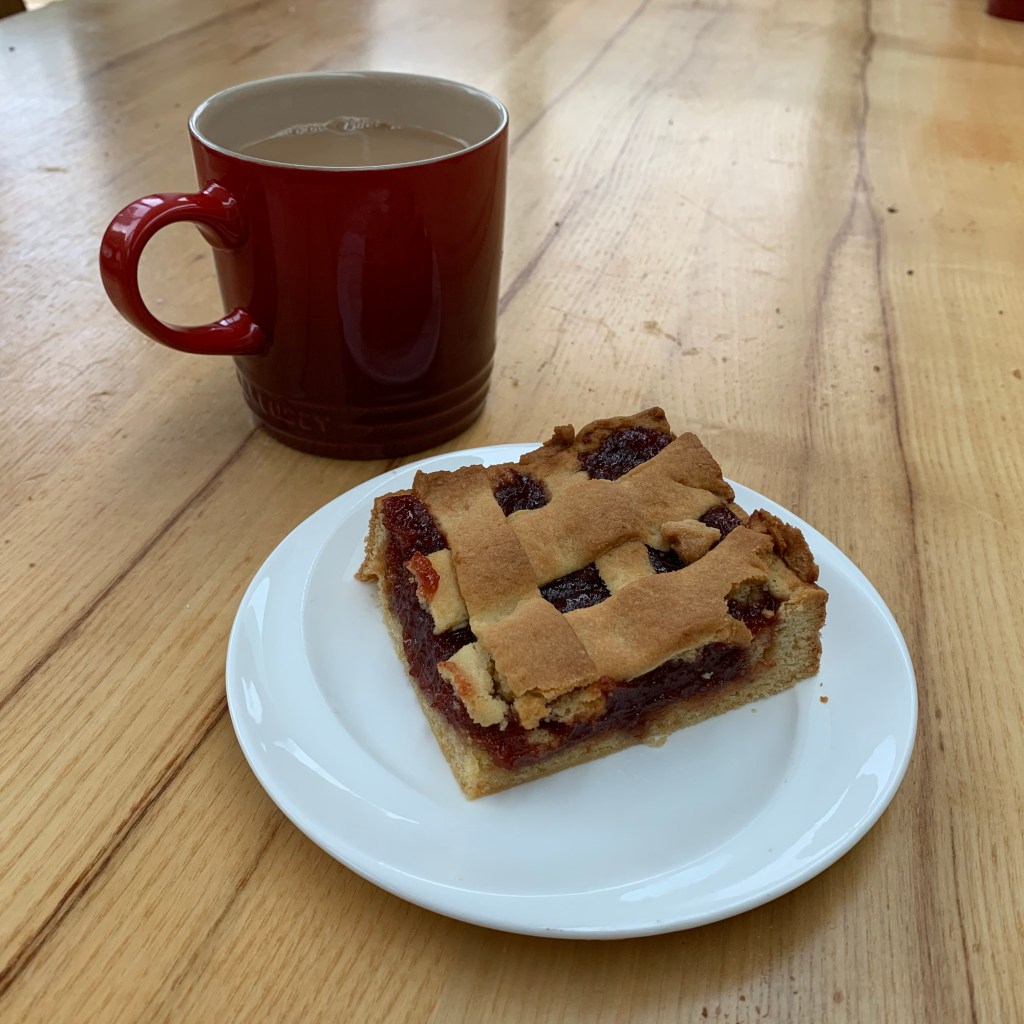
Quince paste
This is metricised and modified slightly from the recipe from simplyrecipes.com. I overbought quinces and made around double this recipe, which was way too much: the quantities here will make well over 1kg of paste, which is a lot more than you need for the Pasta Frola.
- Around 1 kg of quinces (typically 4 fruit)
- Grated zest and juice of one lemon
- Vanilla essence to taste
- Around 800g jam sugar (to be adjusted)
- Peel and core the quinces, being sure to remove the fibrous bit of stalk that’s inside the quince. Chop coarsely (maybe 8-12 pieces per fruit).
- Put them in a saucepan, add the grated lemon zest cover them with cold water and bring to the boil.
- Simmer for around 30-40 minutes until you can cut them with a wooden spoon
- Drain the quince pieces and transfer to the bowl of a food processor: blitz until extremely smooth (this can take several minutes).
- Return the puree to a saucepan, add the sugar, vanilla essence and lemon juice.
- Bring to the boil, uncovered, and simmer gently for 60-90 minutes, stirring often enough to ensure that you don’t caramelise the paste on the bottom of the pan.
- Preheat oven to 125℃
- When the mixture is a dark pink/orange, remove from the heat. Line a shallow rectangular oven dish with baking parchment and spread the mixture evenly into the dish.
- Leave the dish in the oven for around 90 minutes for the paste to dry out. The Spanish and Portuguese cook theirs to the consistency of thick jelly, so that you can cut slices of it. It’s quite difficult to get to this stage without burning it somewhere, and in any case, you don’t need to for Pasta Frola: a soft paste is just fine and you’re going to be baking it some more anyway.
By the way, quince paste is a really wonderful accompaniment to cheese, particularly sharply flavoured cheese.
The Pasta Frola
Thanks for this to my daughter’s South American colleague Daniel (who was the person who insisted that it should be included in this blog in the first place). His recipe was for about double this amount as a 40cm x 30cm traybake: I used a square tin with a removable base of around 23cm x 23cm, which left a small amount of pastry left over.
- 250g plain flour (use OO if possible)
- 15g baking powder
- 90g cup of sugar
- 125g butter, plus some for greasing
- 3 egg yolks (around 50g)
- 40ml milk
- 700g quince paste (see above)
- 50ml madeira, port or similar fortified wine
- Preheat oven to 150℃
- If your butter isn’t soft, cut it into squares and leave it a few minutes to soften
- In the bowl of your stand mixer, combine flour, sugar and baking powder and mix well
- Add the butter and mix until you reach the breadcrumb stage
- Separate the eggs and add the yolks to the mixture, together with the milk
- Mix until you have a smooth dough
- Knead it for a couple of minutes until somewhat elastic, then cover and leave for 15 minutes
- Meanwhile, grease the tin, and mix the quince paste and madeira in a bowl
- Once the dough has finished resting, separate out one third of it and set aside. On a generously floured board, roll it out to the size of your tin with around 2cm overlap all the way round
- Line your tin with the dough. If, like me, your dough always breaks at this point, don’t worry – just press it into the bottom and sides with your fingers as best you can. The recipe is very forgiving
- Pour your quince mixture into the tin and spread it to the edges
- If necessary, trim the pastry down to the height of the filling
- Roll out the remaining amount of pastry and cut it into strips approximately 1cm wide. Use these to form a lattice over the tart. At this point, you might like to think about how many pieces you’re going to cut the tart into and make sure that you have a gap, not a strip of pastry, at the point at which you’re going to do this (clue: I didn’t do this and learned the hard way).
- Brush the pastry on the top with some of the egg white.
- Bake for around 40 minutes.


